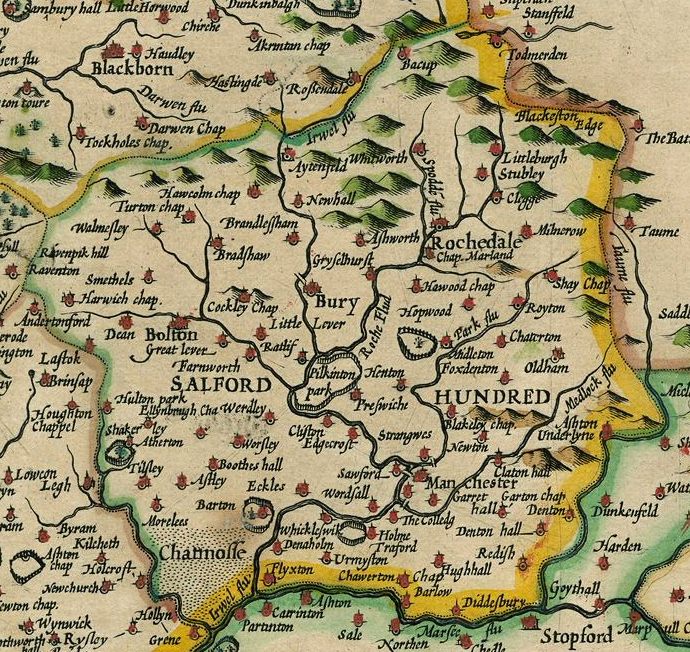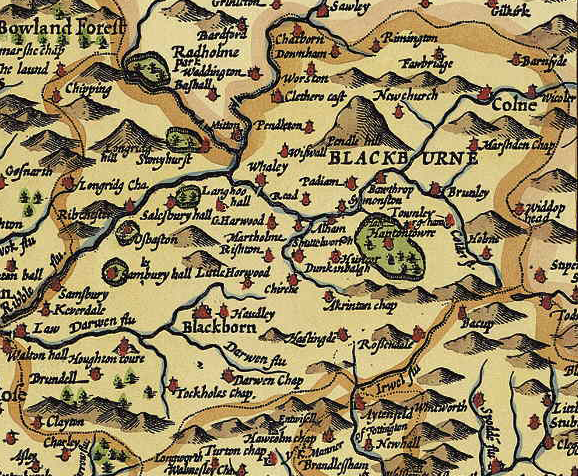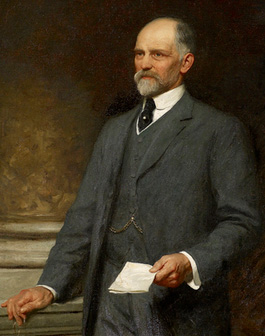|
Albert De Gresle
Albert de Gresle () was a non-resident lord of the manor of Manchester. Origins Various antiquarians believed that the Gresle family originated from Malahulc, purported uncle of Rollo, of whom descended Roger I of Tosny, ancestor of the future Gresley Baronets. William Robert Whatton disputed this, believing the origin and descent of the Gresle family to be separate to that of the Derbyshire baronets, noting the distinct armorial bearings, and noting that there is no record of the Gresleys holding land in Lancashire. Later historians such as James Tait and Falconer Madan supported Whatton's refutation of this purported origin. In ''The History of the County Palatine and Duchy of Lancaster'', James Croston identifies Albert Gresle as being Albert Bussel, brother of Lord Warin Bussel of Penwortham. Tait states in ''Mediæval Manchester and the beginnings of Lancashire'' that "this wild identification affords a good illustration of the mingled ignorance and rashness of too many lo ... [...More Info...] [...Related Items...] OR: [Wikipedia] [Google] [Baidu] |
Old French
Old French (, , ; Modern French: ) was the language spoken in most of the northern half of France from approximately the 8th to the 14th centuries. Rather than a unified language, Old French was a linkage of Romance dialects, mutually intelligible yet diverse, spoken in the northern half of France. These dialects came to be collectively known as the , contrasting with the in the south of France. The mid-14th century witnessed the emergence of Middle French, the language of the French Renaissance in the Île de France region; this dialect was a predecessor to Modern French. Other dialects of Old French evolved themselves into modern forms (Poitevin-Saintongeais, Gallo, Norman, Picard, Walloon, etc.), each with its own linguistic features and history. The region where Old French was spoken natively roughly extended to the northern half of the Kingdom of France and its vassals (including parts of the Angevin Empire, which during the 12th century remained under Anglo-Norman rul ... [...More Info...] [...Related Items...] OR: [Wikipedia] [Google] [Baidu] |
Salford Hundred
The Salford Hundred (also known as Salfordshire) was one of the subdivisions of the historic county of Lancashire, in Northern England (see: Hundred (county division). Its name alludes to its judicial centre being the township of Salford (the suffix ''- shire'' meaning the territory was appropriated to the prefixed settlement). It was also known as the Royal Manor of Salford and the Salford wapentake.. Origins The Manor or Hundred of Salford had Anglo-Saxon origins. The ''Domesday Book'' recorded that the area was held in 1066 by Edward the Confessor. Salford was recorded as part of the territory of ''Inter Ripam et Mersam'' or "Between Ribble and Mersey", and it was included with the information about Cheshire, though it cannot be said clearly to have been part of Cheshire. The area became a subdivision of the County Palatine of Lancaster (or Lancashire) on its creation in 1182. Salford Hundred Court In spite of its incorporation into Lancashire, Salford Hundred retained ... [...More Info...] [...Related Items...] OR: [Wikipedia] [Google] [Baidu] |
Manchester (ancient Township)
Manchester Township was one of the many townships and chapelries which formed the ancient parish of Manchester within the Salford hundred of Lancashire, England. It included the area of what is now Manchester city centre and the adjoining area of Ancoats. In 1792 commissioners, usually known as police commissioners, were established for the improvement of the township. Under the Municipal Corporations Act 1835, the municipal borough Municipal boroughs were a type of local government district which existed in England and Wales between 1835 and 1974, in Northern Ireland from 1840 to 1973 and in the Republic of Ireland from 1840 to 2002. Broadly similar structures existed in S ... of Manchester was established in 1838 as a local authority area, and included the townships of Manchester, Beswick, Cheetham, Chorlton-on-Medlock and Hulme.{{citation , url=http://www.gmcro.co.uk/Guides/Gazeteer/gazzm2n.htm , title=Greater Manchester Gazetteer, publisher=Greater Manchester County ... [...More Info...] [...Related Items...] OR: [Wikipedia] [Google] [Baidu] |
Blackburn Hundred
Blackburn Hundred (also known as Blackburnshire) is a historic sub-division of the county of Lancashire, in northern England. Its chief town was Blackburn, in the southwest of the hundred. It covered an area similar to modern East Lancashire, including the current districts of Ribble Valley (excluding the part north of the River Ribble and east of the Hodder, which was then in Yorkshire), Pendle (excluding West Craven, also in Yorkshire), Burnley, Rossendale, Hyndburn, Blackburn with Darwen, and South Ribble (east from Walton-le-dale and Lostock Hall). Much of the area is hilly, bordering on the Pennines, with Pendle Hill in the midst of it, and was historically sparsely populated. It included several important royal forests. In the 18th century several towns in the area became industrialized and densely populated, including Blackburn itself, and Burnley. Early history The shire probably originated as a county of the Kingdom of Northumbria, but was much fought over. In the D ... [...More Info...] [...Related Items...] OR: [Wikipedia] [Google] [Baidu] |
Roger De Busli
Roger de Busli (c. 1038 – c. 1099) was a Norman baron who participated in the conquest of England in 1066. Life Roger de Busli was born in or around 1038. His surname comes from the town now known as Bully (near Neufchâtel-en-Bray, mentioned as ''Buslei'' ar. 1060, ''Busli'' 12th century.) in Normandy, and he was likely born there. Busli was given lands in Nottinghamshire, Derbyshire and the Strafforth wapentake of Yorkshire. These had previously belonged to a variety of Anglo-Saxons, including Edwin, Earl of Mercia.David Hey, ''Medieval South Yorkshire'' By the time of the Domesday survey de Busli was tenant-in-chief of 86 manors in Nottinghamshire, 46 in Yorkshire, and others in Derbyshire, Lincolnshire and Leicestershire, plus one in Devon. They became the Honour of Blyth (later renamed the Honour of Tickhill), and within it, de Busli erected numerous castles, at Tickhill, Kimberworth, Laughton-en-le-Morthen and Mexborough. In 1088, he founded Blyth Priory. Much of th ... [...More Info...] [...Related Items...] OR: [Wikipedia] [Google] [Baidu] |
Nottingham
Nottingham ( , East Midlands English, locally ) is a city status in the United Kingdom, city and Unitary authorities of England, unitary authority area in Nottinghamshire, East Midlands, England. It is located north-west of London, south-east of Sheffield and north-east of Birmingham. Nottingham has links to the legend of Robin Hood and to the lace-making, bicycle and Tobacco industry, tobacco industries. The city is also the county town of Nottinghamshire and the settlement was granted its city charter in 1897, as part of Queen Victoria's Diamond Jubilee celebrations. Nottingham is a tourist destination; in 2018, the city received the second-highest number of overnight visitors in the Midlands and the highest number in the East Midlands. In 2020, Nottingham had an estimated population of 330,000. The wider conurbation, which includes many of the city's suburbs, has a population of 768,638. It is the largest urban area in the East Midlands and the second-largest in the Midland ... [...More Info...] [...Related Items...] OR: [Wikipedia] [Google] [Baidu] |
Lincoln, England
Lincoln () is a cathedral city, a non-metropolitan district, and the county town of Lincolnshire, England. In the 2021 Census, the Lincoln district had a population of 103,813. The 2011 census gave the Lincoln Urban Area, urban area of Lincoln, including North Hykeham and Waddington, Lincolnshire, Waddington, a population of 115,000. Roman Britain, Roman ''Lindum Colonia'' developed from an Iron Age settlement on the River Witham. Landmarks include Lincoln Cathedral (English Gothic architecture; for over 200 years the world's tallest building) and the 11th-century Norman architecture, Norman Lincoln Castle. The city hosts the University of Lincoln, Bishop Grosseteste University, Lincoln City F.C., Lincoln City FC and Lincoln United F.C., Lincoln United FC. Lincoln is the largest settlement in Lincolnshire, with the towns of Grimsby second largest and Scunthorpe third. History Earliest history: ''Lincoln'' The earliest origins of Lincoln can be traced to remains of an Iron Ag ... [...More Info...] [...Related Items...] OR: [Wikipedia] [Google] [Baidu] |
Norfolk
Norfolk () is a ceremonial and non-metropolitan county in East Anglia in England. It borders Lincolnshire to the north-west, Cambridgeshire to the west and south-west, and Suffolk to the south. Its northern and eastern boundaries are the North Sea, with The Wash to the north-west. The county town is the city of Norwich. With an area of and a population of 859,400, Norfolk is a largely rural county with a population density of 401 per square mile (155 per km2). Of the county's population, 40% live in four major built up areas: Norwich (213,000), Great Yarmouth (63,000), King's Lynn (46,000) and Thetford (25,000). The Broads is a network of rivers and lakes in the east of the county, extending south into Suffolk. The area is protected by the Broads Authority and has similar status to a national park. History The area that was to become Norfolk was settled in pre-Roman times, (there were Palaeolithic settlers as early as 950,000 years ago) with camps along the highe ... [...More Info...] [...Related Items...] OR: [Wikipedia] [Google] [Baidu] |
Roger The Poitevin
Roger the Poitevin (Roger de Poitou) was born in Normandy in the mid-1060s and died before 1140. He was an Anglo-Norman aristocrat, possessing large holdings in both England and through his marriage in France. He was the third son of Roger of Montgomery, 1st Earl of Shrewsbury and Mabel de Bellême. The appellation "the Poitevin" was for his marriage to an heiress from Poitou. Roger acquired a great lordship in England, with lands in Salfordshire, Essex, Suffolk, Nottinghamshire, Derbyshire, Lincolnshire, Hampshire and North Yorkshire. The principal part of the Lordship was in what was then called ''inter Mersam et Ripam'', that is, "between the Mersey and the Ribble" and is now divided between Lancashire, Merseyside, and Greater Manchester. After 1090, he also assumed the title 1st Lord of Bowland. Before 1086, he had married Almodis, daughter of Count Aldebert II of La Marche in Poitou, and sister and presumptive heiress of count Boso III who was childless and unmarried. Rog ... [...More Info...] [...Related Items...] OR: [Wikipedia] [Google] [Baidu] |
Norman Conquest Of England
The Norman Conquest (or the Conquest) was the 11th-century invasion and occupation of England by an army made up of thousands of Normans, Norman, Duchy of Brittany, Breton, County of Flanders, Flemish, and Kingdom of France, French troops, all led by the Duke of Normandy, later styled William the Conqueror. William's claim to the English throne derived from his familial relationship with the childless Anglo-Saxon king Edward the Confessor, who may have encouraged William's hopes for the throne. Edward died in January 1066 and was succeeded by his brother-in-law Harold Godwinson. The Norwegian king Harald Hardrada invaded northern England in September 1066 and was victorious at the Battle of Fulford on 20 September, but Godwinson's army defeated and killed Hardrada at the Battle of Stamford Bridge on 25 September. Three days later on 28 September, William's invasion force of thousands of men and hundreds of ships landed at Pevensey in Sussex in southern England. Harold march ... [...More Info...] [...Related Items...] OR: [Wikipedia] [Google] [Baidu] |
University Of Hull
The University of Hull is a public research university in Kingston upon Hull, a city in the East Riding of Yorkshire, England. It was founded in 1927 as University College Hull. The main university campus is located in Hull and is home to the Hull York Medical School, a joint initiative with the University of York. Students are served by Hull University Union. The first chancellor of the university was Michael Willoughby, 11th Baron Middleton, Lord Middleton (1954–1969), followed by Henry Cohen, 1st Baron Cohen of Birkenhead, Lord Cohen (1970–1977), Richard Wilberforce, Baron Wilberforce, Lord Wilberforce (1978–1994), and Robert Armstrong, Baron Armstrong of Ilminster, Lord Armstrong (1994–2006). Virginia Bottomley (Baroness Bottomley of Nettlestone) was installed as the current chancellor in April 2006. History University College The foundation stone of University College Hull, then an external college of the University of London, was laid in 1927 by Prince Albert, th ... [...More Info...] [...Related Items...] OR: [Wikipedia] [Google] [Baidu] |






